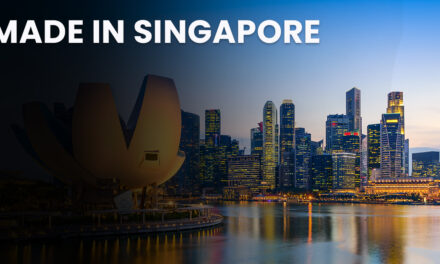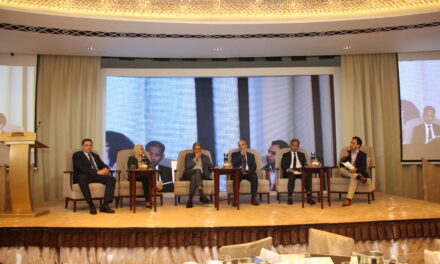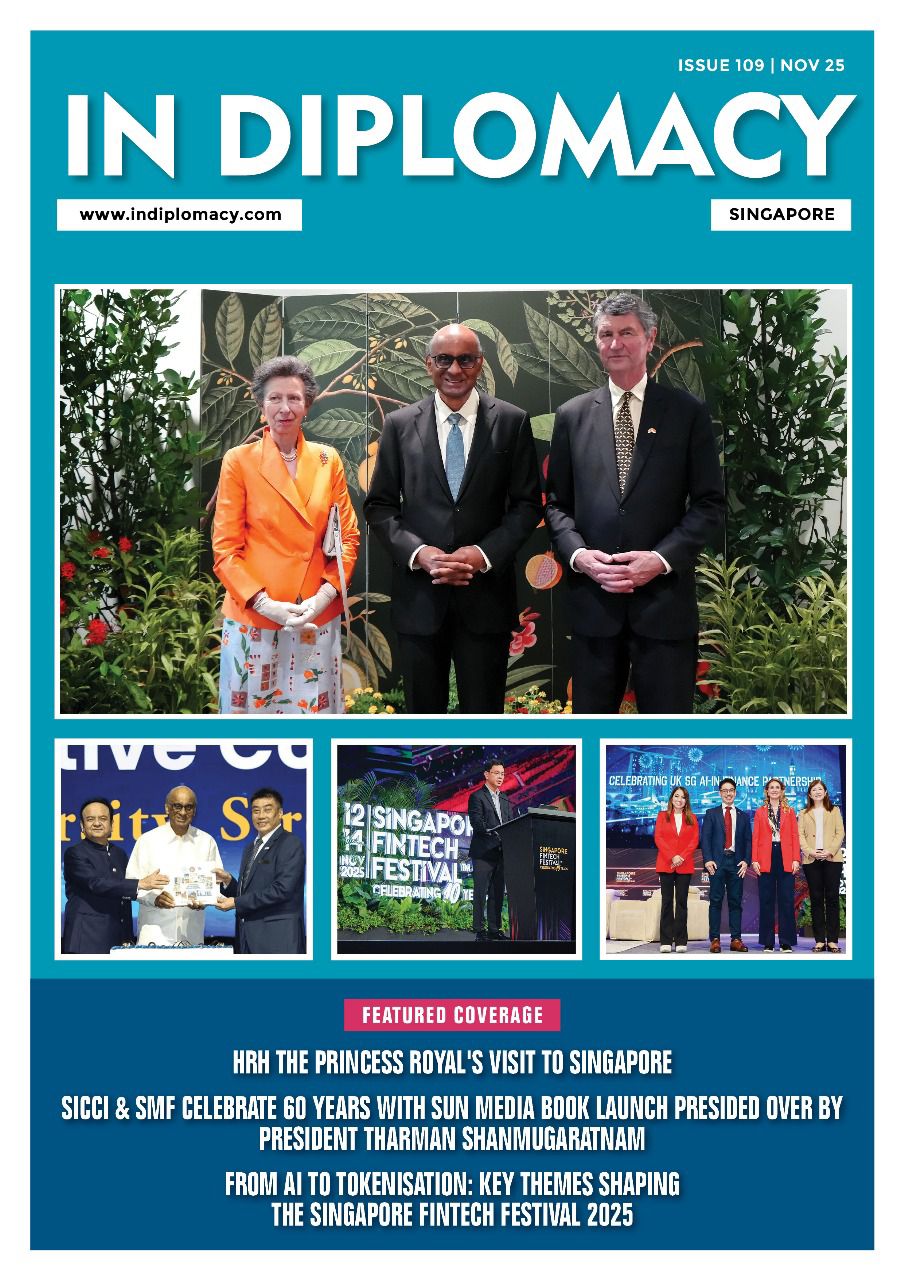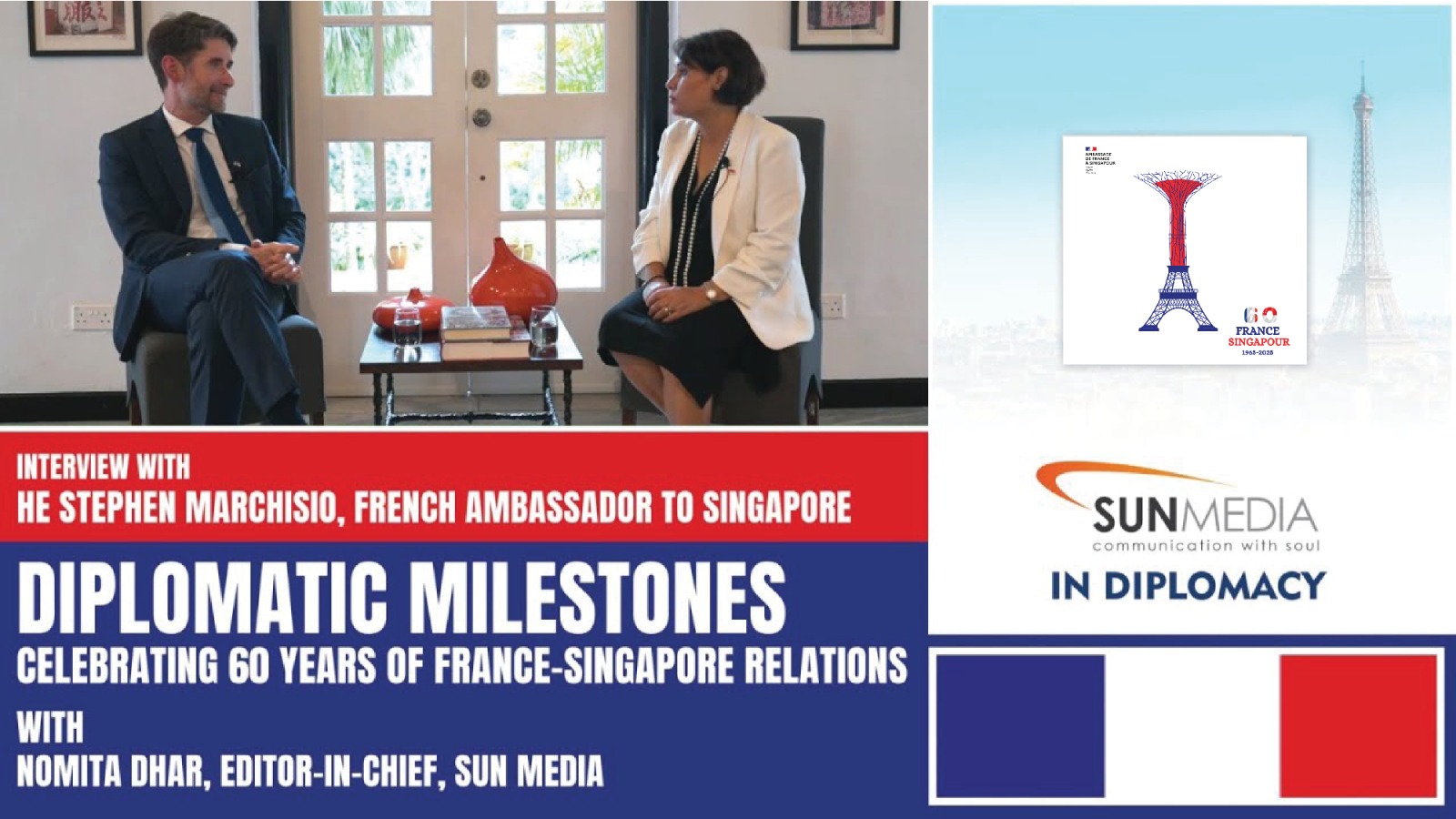
High Commissioner Jawed Ashraf shares his insights and perspectives during his tenure here with IN Diplomacy’s Editor-in-Chief Nomita Dhar before he leaves for his next posting in Paris
IT’S been three and a half years and you are ready to go back. But it feels as if you just arrived and we do not want to let you go.
Well unfortunately, time really gathers wings over here in Singapore. It’s a busy station for everyone, particularly for India. It feels the same way for me; three years have just gone by in a blur. But that also means that it’s been very enjoyable, very productive. And certainly, at a personal level very rewarding and enriching too.
You kept everyone busy, and you’ve been very busy. I’d like to know where you get this much energy from and how you have achieved so much? India was seen at a scale which is unprecedented. I’ve been reporting on India for 27 years and I haven’t seen its profile raised so much on this scale. For you what were the highpoints achieved in these three and a half years?
Where do I get my energy? I don’t know whether I have that much energy, but I certainly feel like I could do with some more. I guess it’s just the joy of working and that keeps me going and also recognizing that there is a huge responsibility that I shoulder, both on behalf of the country I represent and the community that is here.
I think it is something that I haven’t thought about. It just comes naturally. And I guess, in some sense, it is just a self-driven thing. Hard to really explain, and I’m not even sure whether I should say I have a lot of energy – but if you say so there might be something in it.
About the scale and achievements. Frankly, I don’t think that I should arrogate any achievements to myself. Firstly, it is teamwork and secondly, it is a combination of factors, including the support we get from the Indian and Singapore governments.
But beyond the two governments it’s also from the larger community of stakeholders, which is the business community, the people in the worlds of art and culture, technology, innovation in the defense and security space and the academics of think tanks. And finally of course this absolutely wonderful, talented, highly accomplished, and deeply connected Indian community in Singapore.
Our job is really to capitalize all the forces that are on our side and bring them together so they’re working together, so that we can make that huge difference. As I’d say this has been an important element that we’ve always tried to tap into the opportunities, for the talent, for the resources. And that’s enabled us at least to say that, yes, we’ve achieved some of the goals we’ve set for ourselves. Does that mean that we have done everything we’d wanted to do? I’d say probably not. Certainly, this is a clean slate that you can keep writing on it as much as you like and as much as others would let you write on it.
Overall, I think we are just a catalyst in the process. India and Singapore have certainly advanced the relationship. In the course of these past three years we have made progress across every dimension of a truly comprehensive strategic partnership.
As far as the High Commission is concerned, yes, there were a number of things that we did which were our initiatives. You’ve seen we’ve had mega events such as the Pravasi Bharatiya Divas – the ASEAN India diaspora event; the two memorable visits here of Prime Minister Modi, And then of course, we have this absolutely massive The Next Phase Business and Innovation Summit in 2019.
We have also done some absolutely new pioneering work in areas such as technology, innovation, FinTech and startups. These are areas which were really our own initiative, for example, the International launch of Indian payment products like the Rupay and BHIM QR. It was something which happened in Singapore, because we pushed for it.
We’re also working on a number of other initiatives, including connecting the payment infrastructure in Singapore with the payment infrastructure in India and connecting MSMEs (Micro, Small and Medium Enterprises) through a digital hub.
Also, as we have done in India with the India Stack, how do you work with Singapore to make it into a global stack. This is again one of our initiatives, which is an ongoing process.
We’ve done well also in other new initiatives such as in defence and in helping more Singaporean companies invest in India; likewise, helping Indian companies invest here. For that, we’ve had constant round of events, to create those bridges to build those connections to build a better understanding of processes, and to create networks of people who can collaborate and work with each other, government with business as well as business with business. And, and we’ve tried to keep this process going.
I think one of the joys here has been to work in the realm of art and culture. And I think we’ve successfully worked with an extraordinary pool of local talent, local events, organisations, and institutions to help create an Indian cultural and art calendar that can rival some of the major cities of India. And this has really been something that’s been a source of great joy.
Now, about the last part of your question – where do we get the money? Where do we get the resources to do an event such as a sit-down dinner for 2,800 people and have a giant stage with five, six giant screens and do that over a two-day period?
It’s largely corporate sponsors, we’ve been fortunate many people have been very generous in supporting our ventures. That shows two things. One, is the great commitment on the part of corporate entities in India and in Singapore, to this strategic partnership, and that’s very encouraging. Much more than the fact that we’ve been able to raise those resources is the fact that there is such keen interest and such a high level of commitment. The second, I think they have confidence in our ability, despite our own very lean team here at the High Commission, that we would be able to deliver on the vision and they certainly liked our vision. At the end of it all, they’ve been very happy.

We’ve also tried to do things differently here. For example, the International Day of Yoga is celebrated globally, and there was a tendency in every city to organize one mega event with you know, thousands of people at an iconic venue which is identified with that city such as New York’s Times Square, Trafalgar Square or Hyde Park in London or the Eiffel Tower in Paris.
For Singapore we wanted to take yoga over to the whole community. So last year, we held 180 yoga sessions in 120 venues in Singapore. That means one venue per six square kilometers of the city. I think that might be a world record for the International Yoga Day. That’s like the highest density of venues and events anywhere in the world. We were able to partner with 40 organizations, including SGactive, Narpani Pearavai (the Indian Activity section which is part of Singapore’s People’s Association) as well as practically every yoga institution here. We were able to do it in hospitals, in homes for the elderly, in mental health institutions and in schools, colleges and universities!
I find that there is just an enormous reservoir of goodwill and willingness on the part of people to not just do things but to do them really well, which is, I think is also the reason for the country’s success.
In terms of your diplomatic career, how has being in Singapore affected you?
Well, it was three wonderful years to start with, in terms of my diplomatic life. My wife and I have certainly enjoyed being here for a number of reasons. We’ve got to experience Southeast Asia for the first time. Singapore, again, is a very special country for reasons beyond what is generally said and we made some wonderful friends. These are relationships that will last well beyond my tenure here and will be, I think the compelling reasons to return here from time to time.
I also got a great sense of what I think is geopolitically and economically one of the most important regions in the 21st century, and it is not just Southeast Asia. From here you can get a great view into a much broader east. And all of this has really enriched me professionally.
Singapore is also at the cutting edge of technology, finance, logistics, and transportation as well as one of the global hubs for businesses. So you get exposed to the great currents of thought in business, technology, finance and trade. And that is something that you can carry with you to other parts of the world.
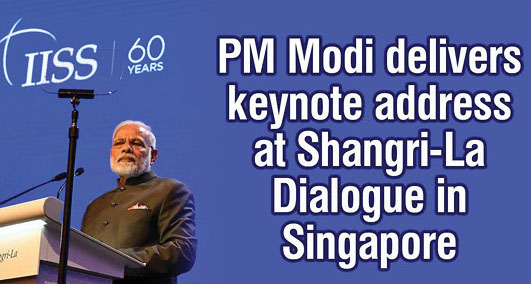
Indo-Pacific region which set off the international and regional discourse on the concept
Personally, it has been very enriching and rewarding. It’s a city which has its arms open to the world. At the same time holds them together in a tight embrace of its diversity. Usually when people speak of Singapore they mention it as a global financial trading hub, a great central business district and superb infrastructure. The images conjured up are excellent highways, wonderful hotels, convention centers – all the hardware of progress.
But I think the bedrock is important and that bedrock is success in many dimensions. One very important dimension, of course, is investment in human resources. The second is the openness and the ability to constantly renew itself and constantly try to stay ahead of changes that the world will always go through. Its policy domains have been excellent. For example, investment in education. I mean, it’s now got world class universities and great research centres.
Here’s something that’s probably not entirely appreciated abroad. Part of the bedrock of its success is that a religiously and culturally diverse country, where 5.7 million residents live within 719 sq. km, has been able to craft a truly harmonious multi-cultural, multi-religious and multi-lingual society. It is not just the laws, which work as deterrence against emergence of fault lines or hate or fighting or violence or animosities and conflict, but that people from leadership downwards work together to foster a sense of togetherness, understanding and appreciation. So, in a sense you do not only just coexist but you embrace each other and that’s a very important pillar of Singapore success.
I think this is an inspiration for the rest of the world. It is not by any means something to take for granted. It is also something that you have to constantly work at. We’ve seen it elsewhere in the world – the fabric that holds society together can be very fragile.
Another thing I feel many Singaporeans themselves do not actually notice but many people who come here from abroad appreciate is the way the city is planned. You may have disadvantaged families, but you don’t have disadvantaged neighbourhoods!
Generally, you don’t see many cities having enriched neighbourhoods sited together along with the middle class, and then very poor families. HDB homes coexists with the most expensive condos and share common spaces and facilities such as schools. So, it creates a great sense of community existence.
And finally, of course, I think what we’ve really enjoyed is a green city. The island’s economic model is really something to look at. It’s a great combination of market and state capacity. I think, the state definitely plays a more important role here. So that it isn’t really about market versus government, private versus public; it’s really about a governance model. So, these are some of the things I’ve learned some of the things that I’ve enjoyed over here.
Excellency, what are the highlights of India-Singapore bilateral ties during your tenure during these three and a half years?
India and Singapore truly share a very warm relationship. It stems from our connected histories, comfort and familiarity of culture and just extraordinary people-to-people ties. If you just look back into history, India’s engagement in this part of the world was natural and continuous. Even the colonial period added a different dimension to it.
So we have had a good base as independent nations for a long time, we weren’t as close as we should have been, but 1990 onwards as India began to open up to the world, and with the instincts honed over centuries, turn to the east, Singapore was the immediate partner. It helped us intellectually connect with this region, but also became a important political, economic, diplomatic and security partner for us.
This relationship has continued to grow and is free from contest and claims, it is filled with goodwill and warmth, there is no doubt and hesitation on this partnership, our only challenge is that we should never be complacent and continue to push the relationship to the potential that we both recognize exist for us.
One of the most important things is beyond the simple metrics of the relationship, the numbers of trade, investment tourism, all of that, there is this indescribable bonding, a sense of mutual respect, and admiration, for what we are as democracies, as multicultural societies, and as strong advocates of rules based international order, in which every country large and small are sovereign and equal, and free and fearless in the choices it makes. And this is an abiding principle for India and Singapore.
Therefore we not only work bilaterally together, but we work in a number of regional and multilateral forums, from G20 to Commonwealth to the Indian Ocean Rim Association and, of course, in the ASEAN-related forums that include the Indian-ASEAN Summit, and also East-Asia Summit. We have an extraordinary range of relationships, the highlights I would say, beside the political one, we have a tremendous defence cooperation relationship. that is a reflection of the mutual trust and confidence we have with each other
During this period, our defence cooperation deepened significantly. In 2018, we marked the 25th anniversary of our naval exercises, the longest continuous exercise that India has with any country. The exercises conducted by Army, Navy and Air Force of our two countries increased in scale and complexity. Now we have started trilateral exercises with Thailand. Singapore participates in India’s multinational exercise. We also signed the mutual logistics agreement and renewed our bilateral army, navy and air-force cooperation agreements. The exchange of ship visits has increased. During the annual defence ministers’ dialogue, we have identified new areas of cooperation that also address some of the new challenges in defence.
In the area of trade Singapore is now the leading source of investment in India for the last few years, particularly the last two to three years. Singapore is also a leading destination for Indian investments abroad. What I’ve seen in the last three years, a trend for many new Indian companies to set up base here to enter not only the Singapore and the region but the wider global market as well. India is Singapore’s third largest source of tourism and this is growing at double digit rates. We expect the same level of growth on the other side as well.
Another exciting new area of partnership that has progressed enormously in the last three years is in technology innovation startups and fintech. As I have said, we have taken some pioneering initiatives at government-to- government level and in catalysing industry-to-industry collaboration.
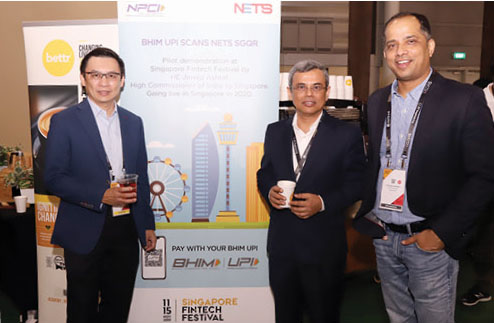
QR Pilot Launch at Singapore Fintech Festival 2019
People-to-people ties have grown, but I think a significant new element is how we are tapping the collective capabilities of the diaspora to support the India-Singapore partnership. They are a professionally highly accomplished and talented group, with a great amount of understanding of India, a great commitment to Singapore, and therefore they can build a very big bridge. In the course of these last three years, we’ve been able to bring together this diverse pool of talent to a common platform and to use that effectively in promoting our relationship.
We have heard from President Halimah Yacob, Prime Minister Lee Hsien Loong, Deputy Prime Minister Heng Swee Keat, and other Singapore Ministers and leaders, that the relationship has certainly moved forward in the last three years in every area. And I think this is a continuous process. We hope that this becomes a springboard for much deeper ties. In the world we are entering into, in the post pandemic era, all the trends we have witnessed in the last three years such as a more digital future will actually accelerate and the future we anticipate will arrive much sooner than later. It will be a world where the old economic orthodoxies of the past decades will not persist. It will certainly be more turbulent during this transition, more uncertain, more contested, maybe fractious. It is in this context that I think we can both work more closely, to reinforce each other’s prosperity.
India is an enormous market opportunity and Singapore for us is not only a source of capital and a partner in many areas of development priorities, but also gateway to the region and beyond. We can also work together and with other countries to advance an open, balanced and inclusive regional architecture in the Indo-Pacific Region that’s critical to both of us; advance the course of a rule-based international order, respect for sovereignty of countries and respect for international law. These are things that are important for both of us.
In general, we should continue to support and promote multilateralism as it is under retreat. The last 70 years we have done well globally because we have had strong institutions and agreements for multilateralism. And now we have to work together on new transnational challenges in the future from pandemics, cyber security to climate change.
You have interacted with many Singaporean and Indian ministers. What are the most significant similarities or differences between Singapore and India?
That’s not a question I can really answer. I mean, we inhabit two very different worlds. India is a country of 1.4 billion people, the most extraordinarily diverse nation in terms of religion, languages, cultural traditions, even geography. And there are so many Indias within India with its federal setup. And so therefore, it’s a far more complex place. India is, of course, the world’s largest democracy and a vibrant one, which is fiercely competitive.
I think I’ve met Indian politicians of great wisdom, great insight, who have done some extraordinary work in India. Since and before independence, we’ve had leaders, and we continue to have leaders who are a source of inspiration to us as well as to others around the world, and who have achieved remarkable things. Look at our own Prime Minister. Some of the achievements over the last six years are simply unbelievable. In 2014 to achieve the scale of his vision in an astonishingly and impossibly short timeframe seemed impossible. But he did and we’ve seen those results.
Similarly, of course, Singapore has this outstanding talent in terms of ministers. The system is different. They come through different processes. But as in every democracy, certainly the ministers here are accessible, they are very open, very easy to converse with. They have extremely good domain knowledge. And they have certainly deep connections with the constituencies. And high level of merit also.
I think what we see in common is that in India or in Singapore or in any other democracy, there is that sense of accountability to the constituencies they represent and to the institutions, which they now belong to. There are many similarities, but we also have very different contexts in which political leadership in India and Singapore operate.
What will you miss most about Singapore?
As I have already spoken about I will certainly miss friendships, and many wonderful aspects of this city, including an amazing variety of cuisines. I’ll also miss the majestic and beautiful India House. It’s lovely and historic. We’ve enjoyed every moment, of our stay.
Any new dishes here you have not tried before?
I mean I’ve tried practically everything; you get this most extraordinary range of cuisines at all price points. And each of them is an experience, whether you’re talking about the best of the fine dining restaurants, or you’re talking about hawker centers, which is also an intangible heritage, and I hope UNESCO at some stage recognizes, (something I will certainly advocate for when I’m in Paris). The Peranakan food was a new discovery.
I understand the Indian Ambassador’s Residence in Paris has its own history and grandeur as well?
Yes, in Paris, it is a historic house situated right next to the Eiffel Tower! I look forward to living there for the next three years or so.
High Commissioner, it has been a joy and a privilege to work with you, learn and grow with you. Thank you for your support, and we will continue to serve you from Singapore. We wish you all the best!
Well thank you its always been a pleasure and thank you for what you’ve done for Shikhar magazine and for being such a strong supporter of what we have been doing at this High Commission.
BOX STORY
COVID-19 CHALLENGES
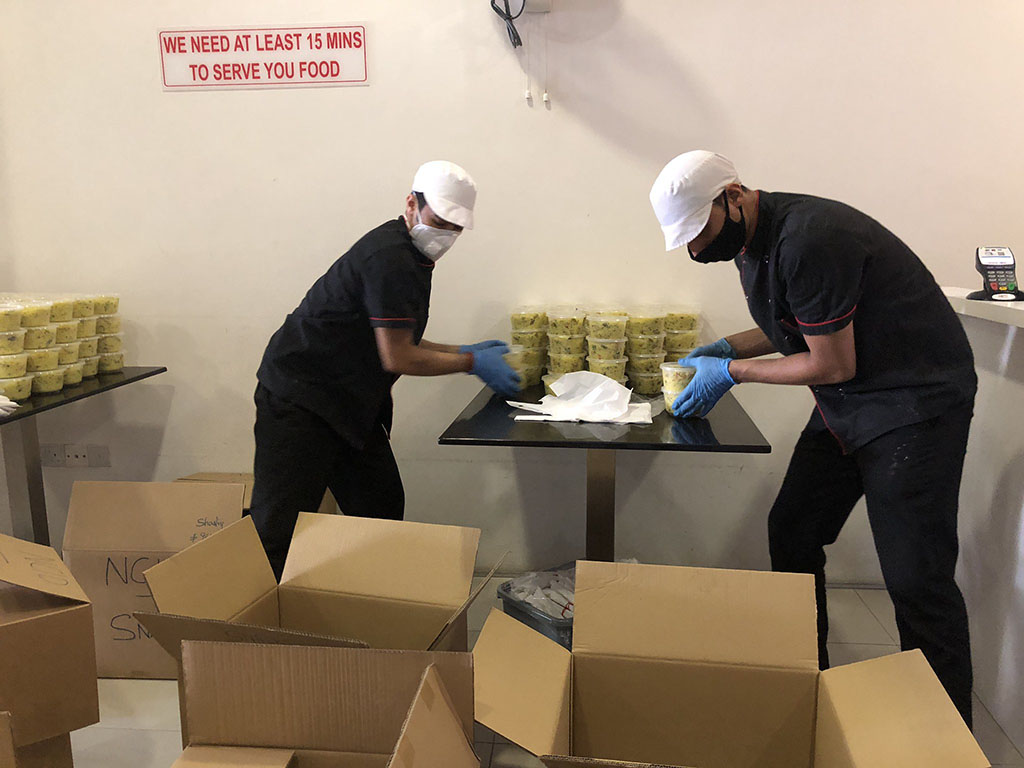

That’s a good question. I mean the last 3-4 months we’ve been extremely busy. We have almost entirely focused our minds on dealing with the pandemic. We have actually been working full time in our office, seven days a week with a skeletal staff. Our local staff was working from home and we tapped them when we needed to. But we generally operated with a very small team with the diplomatic staff deployed here by the government from India.
When we had a lockdown in India, there were many people stranded here. We’ve had other circumstances, workers and professionals who’ve been laid off as well as Indians on short term visits here to see their children, relatives or for business or tourism. They were all stuck here. We also had a number of students. I mean, I’m just amazed at the number of students from India. Some financed their studies through part time work, others had finished their courses and could not return. Then we had those who have had a bereavement in their family in India and wanted to return. We even had women who were in advanced stages of pregnancy! For those who needed it we had to look after them in terms of their accommodation, food and medicine.
So at one stage at one level, we have had to look after those who were stuck here. We had also set up a number of helplines and dedicated email facilities; in addition to this we were responding to queries on social media channels such as Twitter and Whatsapp.
We were also supported enormously by many Indian associations who were independently looking after those who were stranded as well as by places of worship and religious organisations.
The Hindu and Sikh temples, the mosques, and several civic organsiations all doing their own bit and we were in touch with them. So a lot of our time was actually spent also talking to people because they were stuck here and anxious. Remember the entire month of April, we had no repatriation flights.
The students (many in the 16 to 18-year group) were feeling anxiety as they were also in a sense, stripped of all kinds of social contacts. They were isolated in their rooms because of the Circuit Breaker and uncertain when the flights will resume and their parents were getting worried about them; so we also appointed some counselors, to speak to them on a 24-hour basis. They included myself and my colleagues and we tried to reassure and calm them down.
Then in the second week of May we were able to mount the flight repatriations. We did 34 repatriation flights and were able to send back more than 7,000 people. We had at that point in time another 7,800 still to go as the numbers kept growing.
Air India is the carrier for the flights and we are the managers of the repatriation process and there are very, very stringent requirements for travel to India. We had to liaise with the Indian states who have a big role in this exercise as they are the ones who finally take care of those returnees for quarantine, testing etc. It was a very complex exercise in terms of repatriation; we have spent a lot of time on this and continue to do so to date.
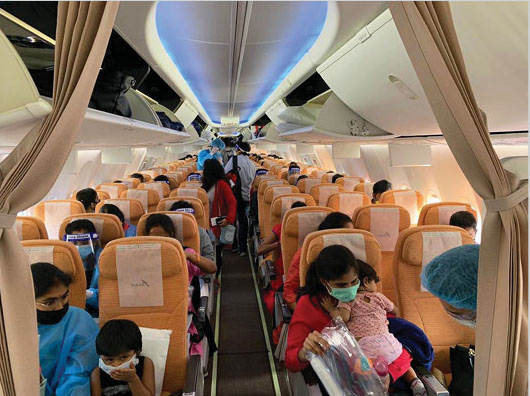
And obviously the demand for repatriation to any destination outstrips the supply, so we had to prioritize the passengers according to compelling reasons. For example, pregnant women, bereavement, illness, etc. So we’ve had to deal with just some extraordinary humanitarian situations. My team was just working around the clock and they have been very sensitive. We try to respond to everyone’s emails, phone calls.
At the same time, we are also working quite closely together with Singapore in keeping the supply chain lines open (for example for essential medical and food supplies) despite the Circuit Breaker here and the restrictions in India.
Then there was the rapid spread of infection among Indian and migrant workers living in dormitories (not just in purposeful dormitories but also in those factory converted dormitories). We had to, of course, deal with that working closely with Singapore’s Ministry of Manpower and other agencies of the government.
These are the things that have kept us very busy.
As to Singapore’s responses to all the above challenges I’d like to say a few things: One, that I think everyone who’s ever lived here or have been here through these difficult times have felt reassured and confident about the way the Singapore government was handling the pandemic. The measures of restrictions were always incremental and appropriate to the situation at a particular point of time.
Second, they (Singapore) have maintained the supply lines, and all supplies were available throughout the outbreak.
Third, they have been proactive, aggressive and transparent. Transparency in terms of information sharing in terms of press briefings in terms of clarifying issues, putting out even individual cases contact tracing issues, all in the public domain gives people a sense of confidence.
We had a moment of concern in Singapore when Singaporeans and PRs were returning from abroad. In the middle of March to the end of March, we saw a spike and then from April. From 28th March 2020 onwards, we began to see this infection grow in dormitories.
I think in the dormitories, I have to say that authorities here have done extremely well. Not only have they worked very proactively and aggressively in testing the workers, contact tracing and treatment, isolating those who have symptoms from those who were healthy. They ensured the dorms were decongested by making temporary arrangements for both those who were healthy workers and employed in essential services and those who have symptoms, but did not require hospitalization.
In addition to that, they were providing free medical care at each dormitory. The workers were assured of their salaries by lawyers. They got three meals a day, and the meals were catered to taste – I mean, the Indians needed Indian food they were getting Indian food.
They got care packages which included thermometers. And importantly with the pandemic like this it is not just a health crisis but there are also social, psychological and emotional consequences. Singapore has gone into the level of providing free SIM cards (from M1), providing free Wi-Fi and an access to some multiple hundreds of news and entertainment channels so the workers can stay connected with their families and friends and occupy their time watching TV programmes if they wanted to.
To boost morale they’ve got messages from public figures in the sports and entertainment worlds including: Rajinikanth, Kamal Haasan, Shankar Mahadevan and Sachin Tendulkar. I think Singapore Minister for Communications and Information and Minister for Cyber Security, Mr S. Iswaran, played a role in that; other Singapore Ministers that played a proactive role in helping the migrant workers included Minister of Manpower and Second Minister for Home Affairs, Ms Josephine Teo, Minister of State in the Ministry of National Development, Mr Zaqy Mohammed and Minister of Home Affairs and Law, Mr K. Shanmugam. I saw all of them playing a very proactive role.
Whenever people in the community wanted to work for the migrant workers, we would direct them to the migrant workers center
As Prime Minister Lee Hsien Loong has said there’s a long road ahead for everyone. But I see today the community spread is almost negligible. And the situation in the dormitories has stabilized. The numbers have come down drastically. There are very rigorous protocols in place as they’ve explained to me, to declare someone COVID free. You require two PCR tests interspersed by a 14-day quarantine.both must be negative and you must not also show any symptoms. So I think it’s been it’s been handled well But we all still need to be alert and cautious.
This current state would not have been possible if it’s just been the government alone. This is where social solidarity and social contract becomes important, a partnership between government and society. So people have also been largely responsible in the way they have accepted the restrictions and the safe distancing norms that were prescribed by the government.
And I would also say that so many people have come forward to provide services to the community, to those affected and also taken care of people they might know living alone in homes etc. It’s a whole of society effort that makes it a success. I’ll give you an example. I frequent the very popular Indian restaurant MTR. For two months, they were supplying fresh snacks and coffee to healthcare workers in eight hospitals. So these are the things that make it work.
PUBLICATION NOTE: The above first appeared in Shikhar Magazine Vol. 2 No. 2. To view or download the PDF version of the whole issue click here or the Flipbook version click here.

